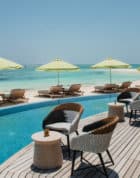Tunisia is the northernmost country in Africa, known for its abundance of historical monuments and seaside resorts.
The country is often overlooked by travellers who flock to nearby destinations in North Africa, such as Morocco or Egypt. However, Tunisia’s rich history, coastal towns, and endless kilometres of Mediterranean coastline has much to offer of its own.
In this article, I’ll share with you 10 tips for your first visit to Tunisia based on my recent visit to help you make the most of your trip.
In This Post
1. Fly in from Europe
Air links into Tunisia are most plentiful from Europe, particularly France. You’ll find ample daily flights from Paris, as well as convenient connections from other French cities like Lyon, Nantes, Lille, Nice, and Marseille.
Air France operates quite a few daily flights, although they charge quite a premium compared to Tunisair, Novelair Tunisie, and Transavia.
Given that the flight times are likely to be in the range of one to two hours, a cheap economy class ticket from a European hub might well be the best way to access Tunisia.
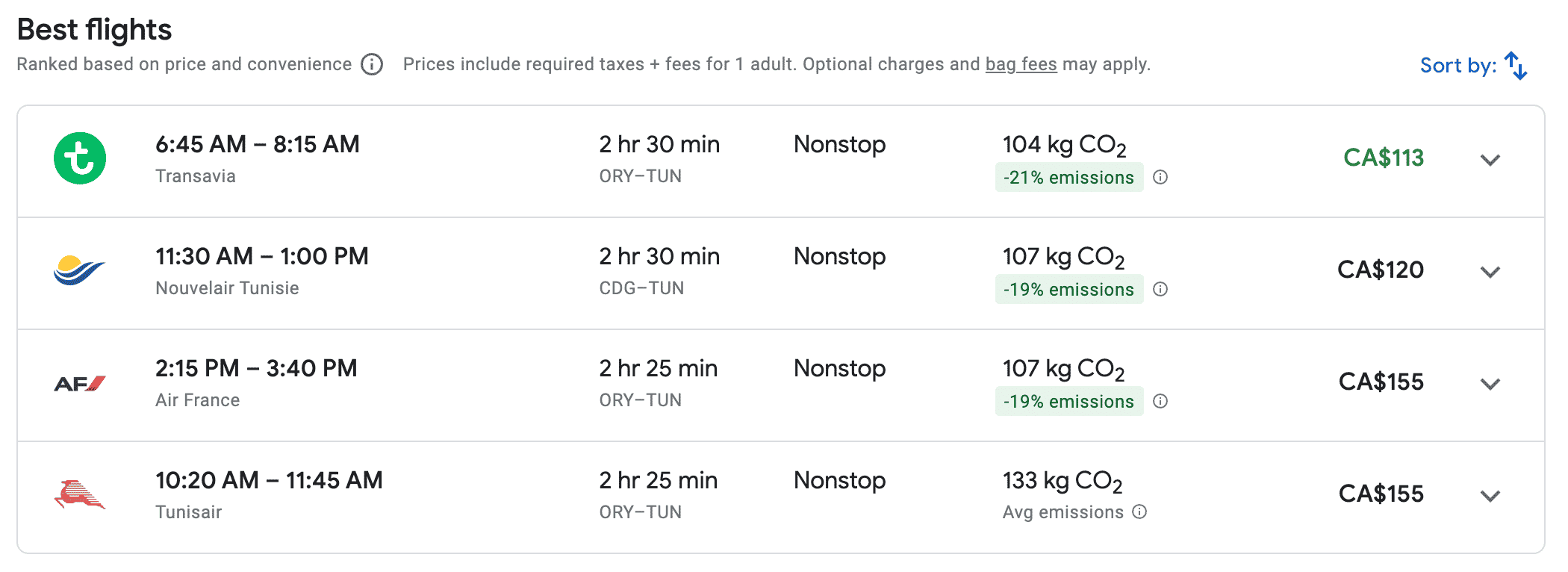
Tunisia and Novelair also offer links to Germany, Italy, Spain, and other European countries, though with less frequent service. Lufthansa’s services from Frankfurt are also worth a look, especially if you’re redeeming Aeroplan points.
And if you’re visiting Tunisia as part of a larger trip to the Middle East and North Africa region, you can look for flights on Royal Air Maroc, Egyptair, Qatar Airways, and Emirates from their respective hubs as well.
In my case, I flew into Tunis (TUN) from Frankfurt on a Lufthansa ticket booked with Aeroplan, and then booked a departing flight from Monastir (MIR) to Nice for about €150.
2. Hire a Driver
When travelling across Tunisia, hiring a driver is likely the best form of transportation. Many of the country’s sights and sounds are spread across large distances, even within the same city.
For example, Tunis, the capital, is a sprawling metropolis befitting of any that settlement that has existed since ancient times. To explore the city comfortably, your best bet may well be to hire a driver for the day.
You can expect to be quoted around 30–40 Tunisian dinars ($12–16 CAD) per hour when hiring a driver; however, you can definitely try to negotiate a lower rate if you’re hiring for a longer period.
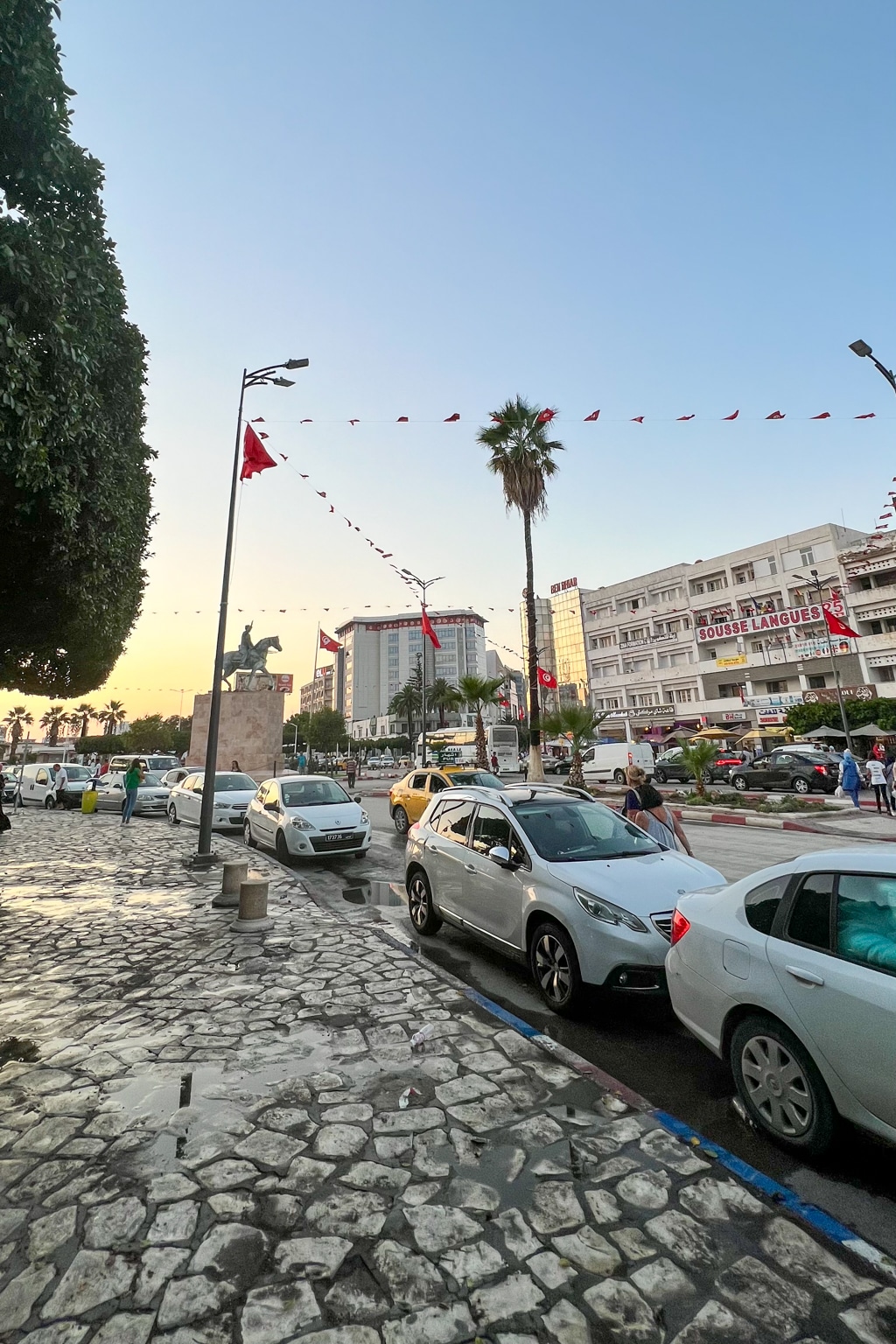
I’d recommend hiring a driver over renting a car – we had friends who rented a car and drove from Tunis to Sousse, but they reported a terrible driving experience along the highway.
You can also use the local Bolt app to hire a taxi if you’re in the city. You’ll still have to pay the taxi driver directly, but the app is a great way to call taxis to your location reliably, and you’ll have a good idea of the price you can expect to pay.
3. Most People Only Speak French & Arabic
The official language of the Republic of Tunisia is Arabic, but French is widely used due to the country being a French protectorate for 75 years.
You’ll find that shopkeepers, wait staff, and hotel staff generally have a decent level of English, but other than that, most locals we encountered only had a rudimentary grasp.
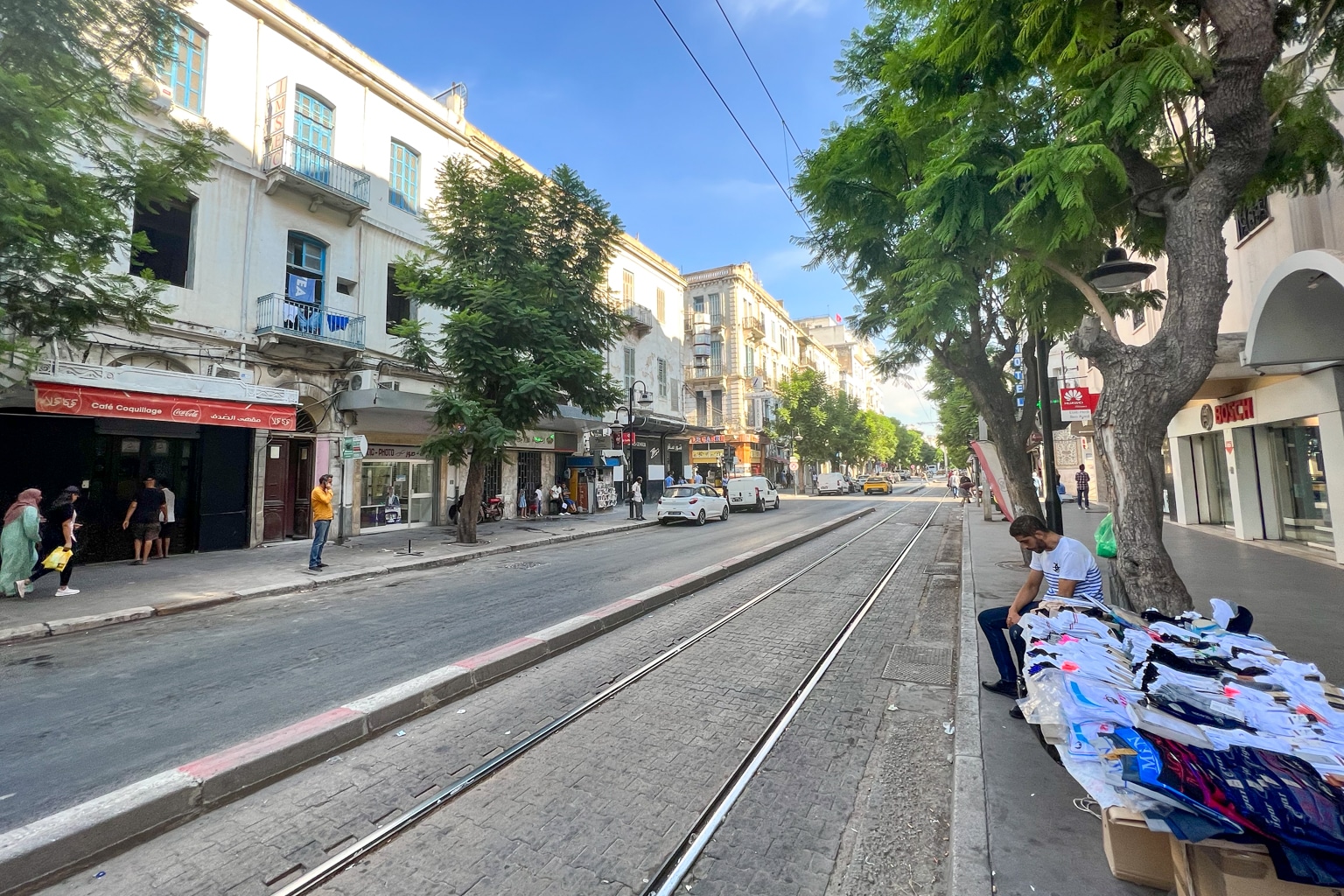
Brushing up on your French language skills would certainly be helpful for your visit, whether it’s simply communicating with taxi drivers a little bit along your ride or being able to exchange perspectives more confidently with any locals that you meet.
Tunisians are typically quite welcoming and curious about what you’re doing as a traveller and where you’re from, so being able to communicate effectively will definitely add to your overall experience.
4. Visit the Ancient Medinas
The Medinas are the ancient city centres of Tunis and most major cities in Tunisia. Not only do they serve as bustling hubs for locals and their daily activities, but they’re also a highlight to visit.
You’ll find a labyrinth of snaking alleyways, narrow streets, and a seemingly endless number of hawking stalls to browse through and get lost in – all nestled between cafés, restaurants, and street food vendors.

I’d note that several of the shops and stalls we passed by in the Medina seemed to be in a transitionary phase, perhaps temporarily shuttered due to the impact of the pandemic.
Thus, the Tunis Medina was perhaps a bit quieter than usual during my visit in the summer of 2022, but was still a worthy attraction.
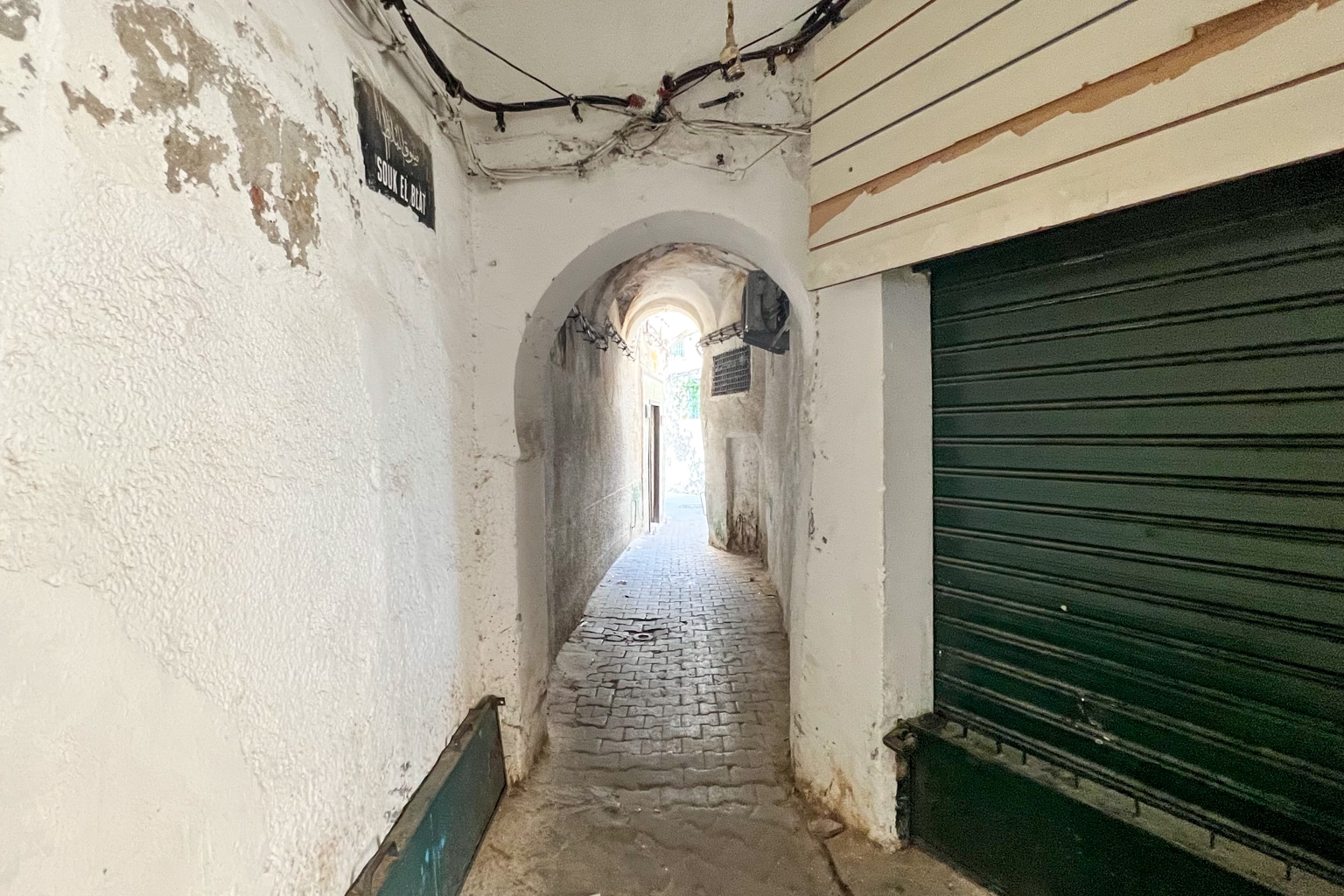
What’s more, the labyrinthine alleyways of the Tunis Medina are interwoven with all kinds of historical points of interest, including mosques and palaces dating to the 12th and 16th centuries.
The oldest mosque in the Medina is the Al-Zaytuna Mosque. It’s a unique architectural sight with its rectangular open courtyard and marble columns, and all four sides are surrounded immediately by the Medina alleyways.
Indeed, I actually stumbled upon the Al-Zaytuna mosque by chance when simply stepping through an archway and emerging into the grand central courtyard.
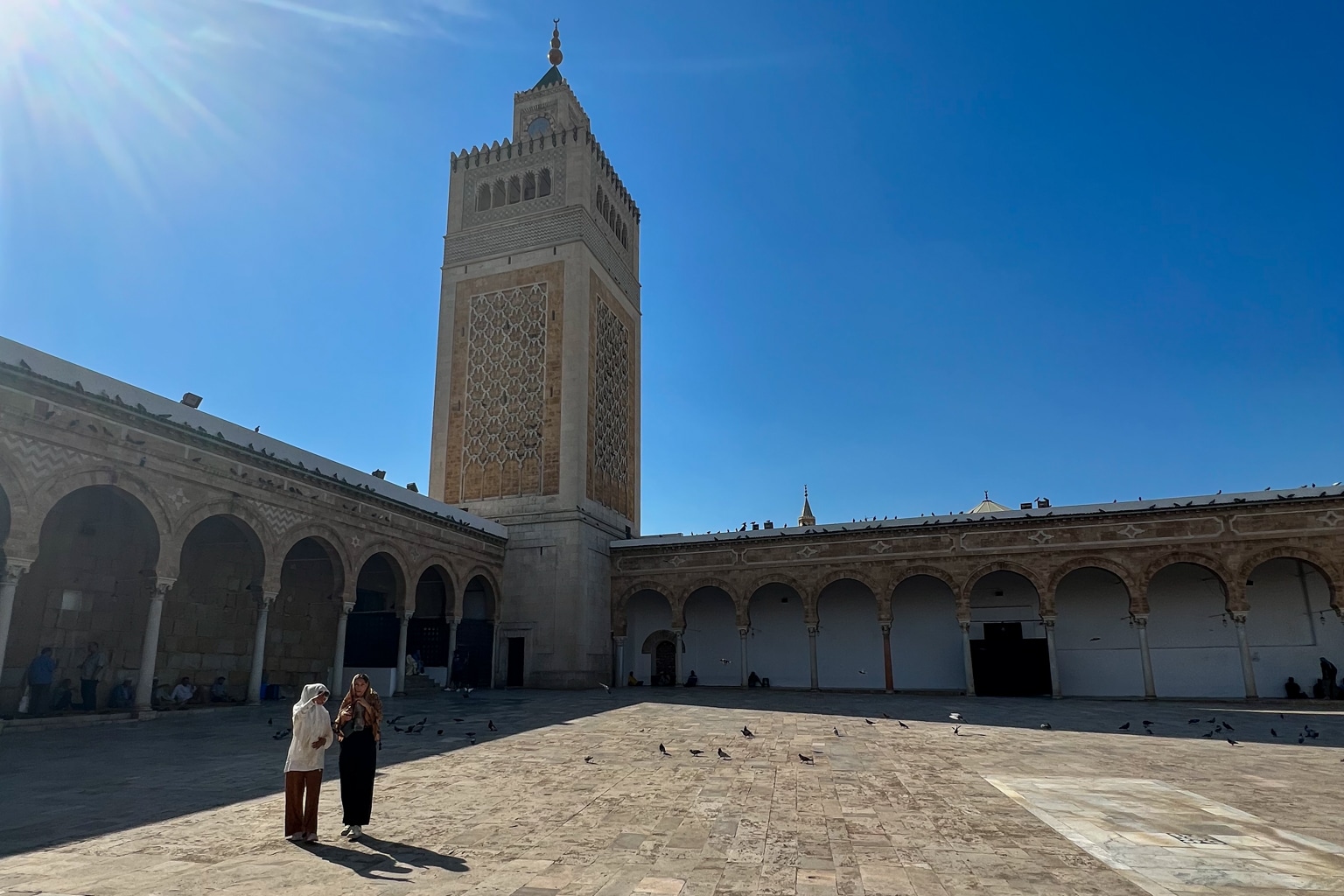
Meanwhile, in contrast to the capital, the Medina of Sousse is surrounded by a city wall. There are several rooftop cafés in the Sousse Medina, where you can enjoy panoramic views of the old city and the coastline beyond it.
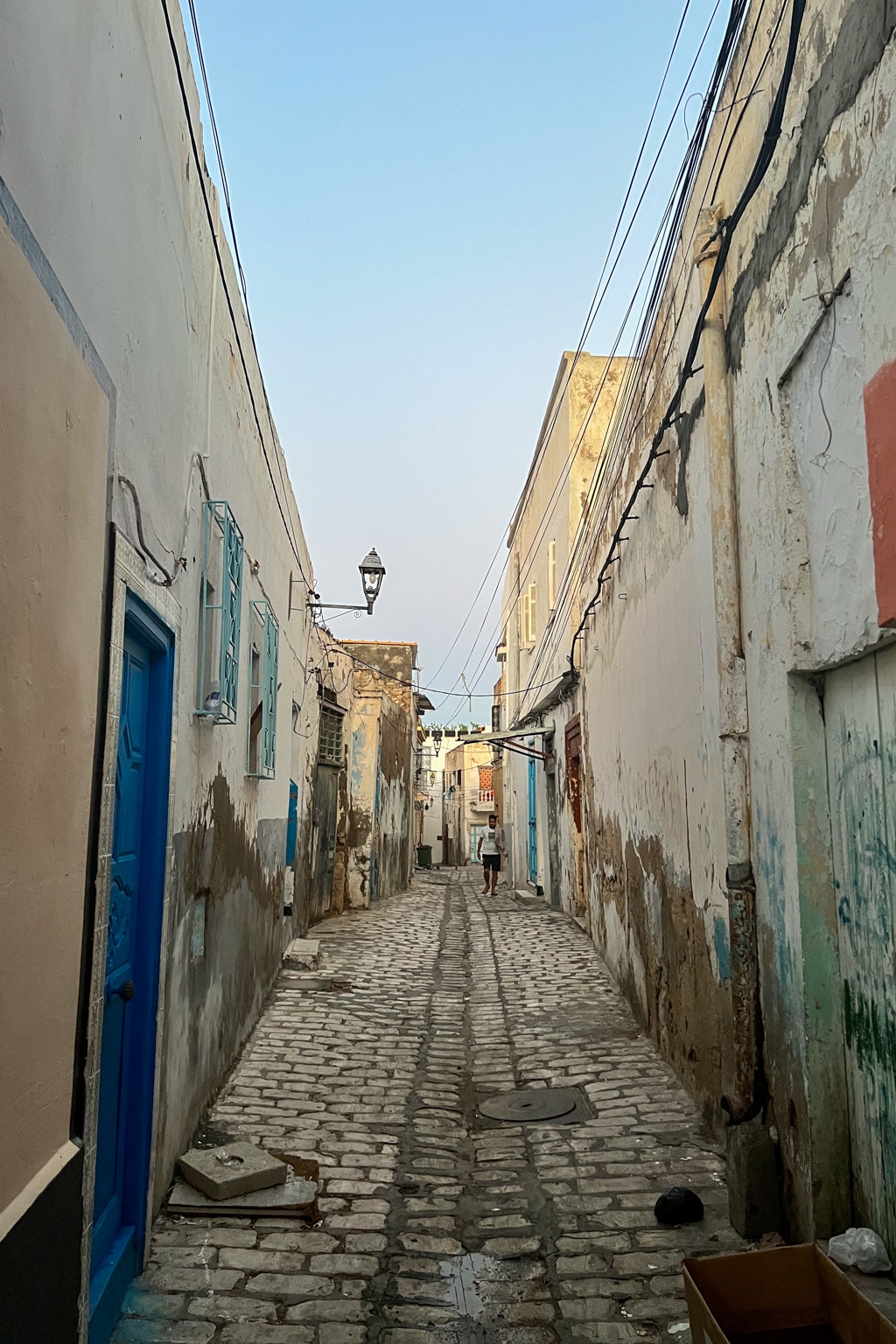
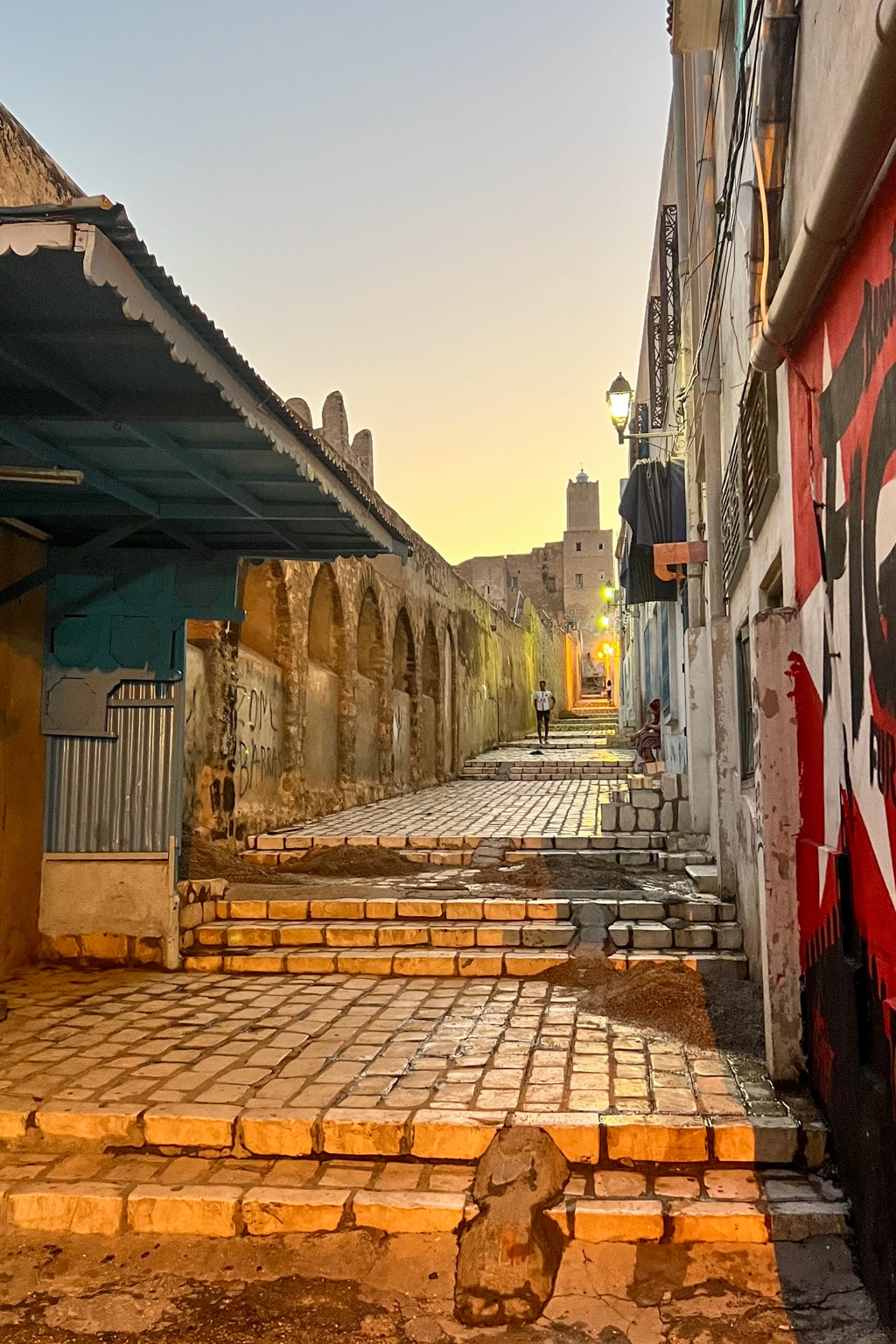
It’s worth timing your visit to a rooftop café with the sunset to make it all the more special.
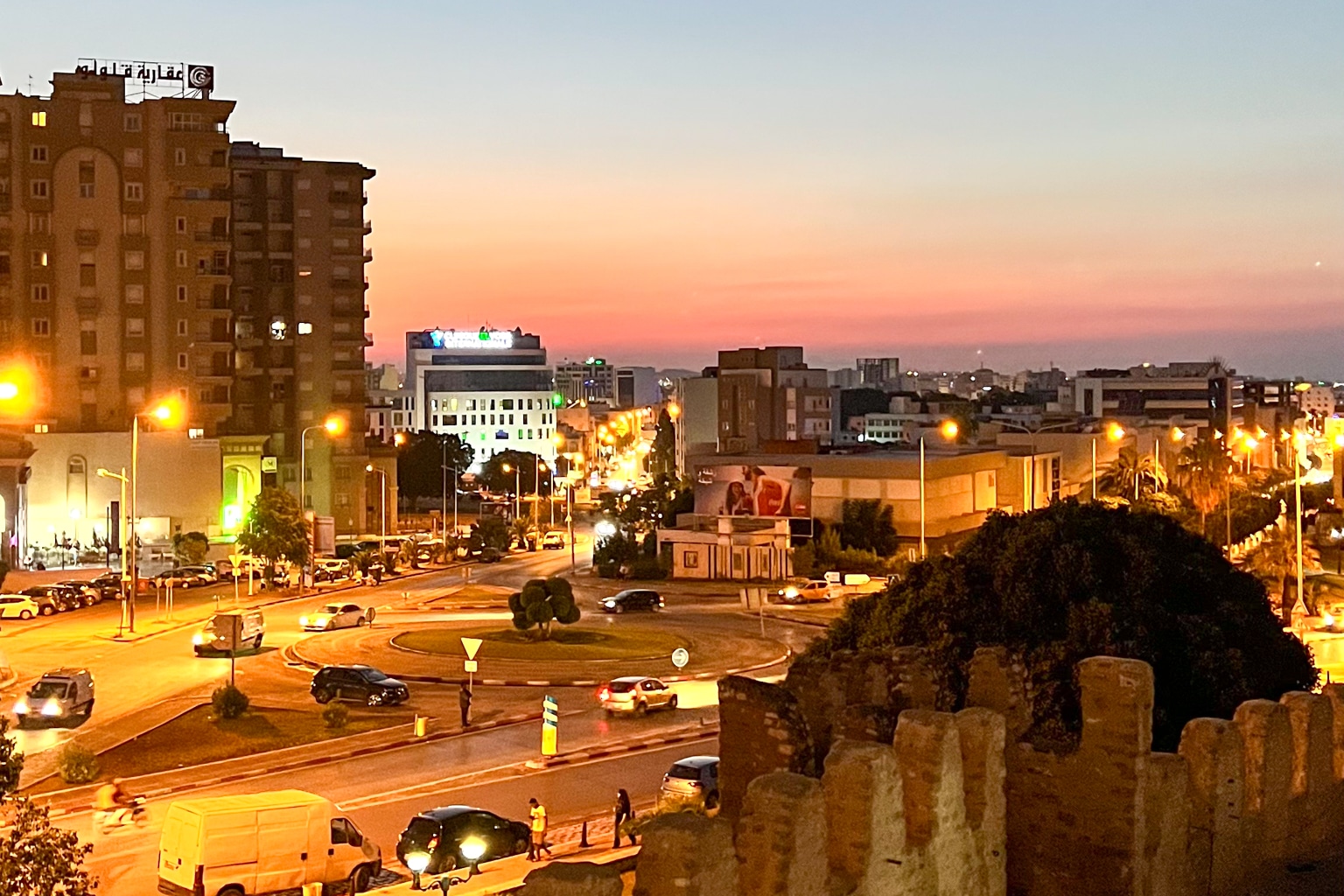
5. See the Ruins of Carthage
As the saying goes, history is written by the victors. You’ve likely heard of the Roman Empire, but perhaps not North Africa’s once dominant power: the ancient Carthaginian civilization.
Carthage was once the formidable opponent of the Romans, and the two great empires fought three Punic Wars over hundreds of years, in which the Romans ultimately emerged victorious. Now, all that’s left of Carthage are its ruins here in modern-day Tunisia.
I found the ruins of Carthage to be a fascinating element of the country. There’s a collection of five or six ancient sites close to one another, so a driver can easily take you around and visit all of them within a few hours.
The Baths of Antoninus were once one of the greatest bath complexes in the Roman world, and the largest such building on the African continent.
Only the foundations remain, but you can walk around, within, and on top of the ruins and admire the sheer scale of what they were.
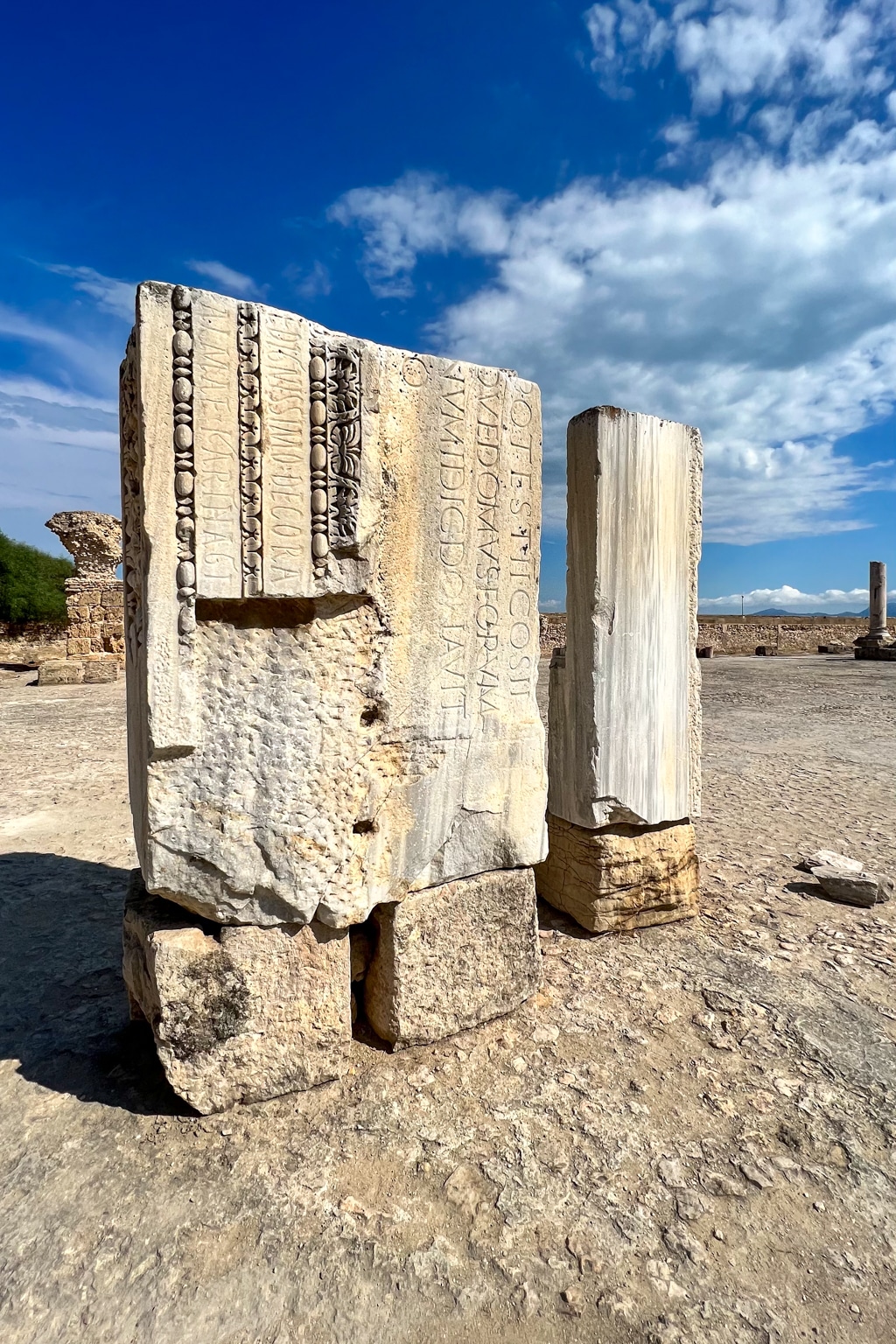
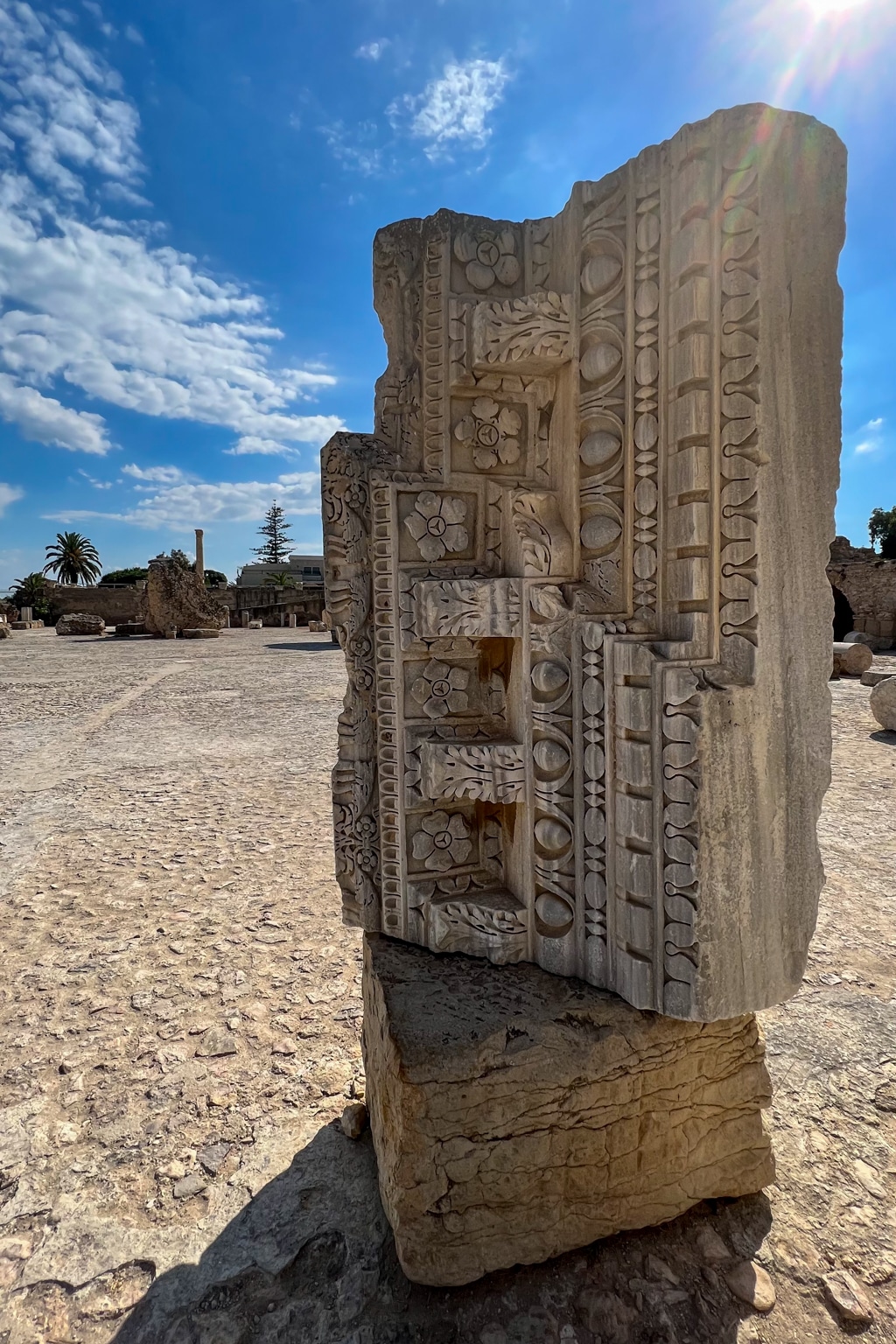
The Roman Amphitheatre is composed of a circle of arches supported by columns, and was once a major Roman stadium capable of holding 30,000 spectators.
Unfortunately, unlike many Roman amphitheatres, little of this one remains today, but your imagination certainly fills in the gaps as you explore the grounds.
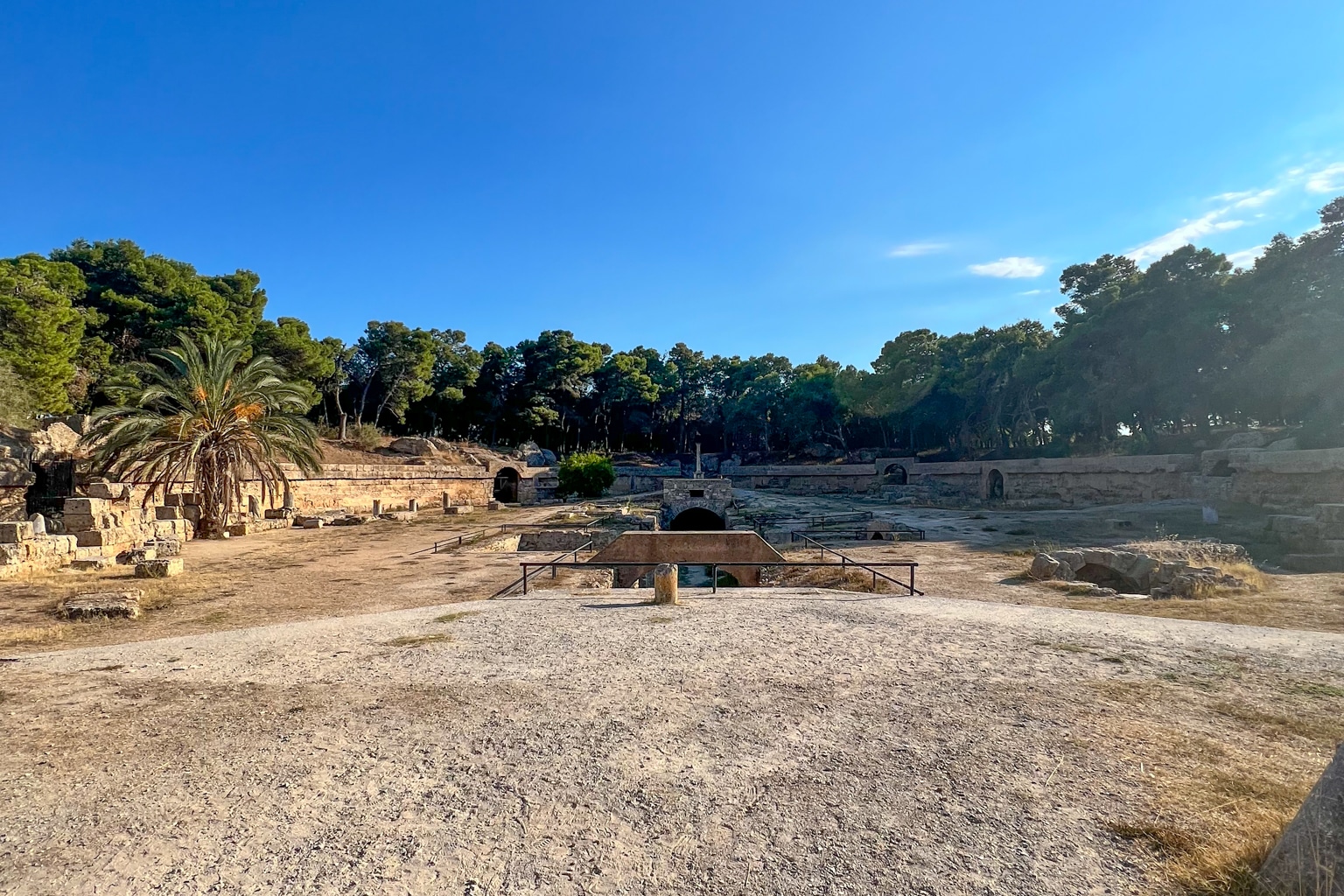
The Roman Villas are what’s left of Roman luxury houses that were built in the area. One villa in particular, the Villa of the Aviary, has well-preserved intricate mosaic tiling of animals on the walls.

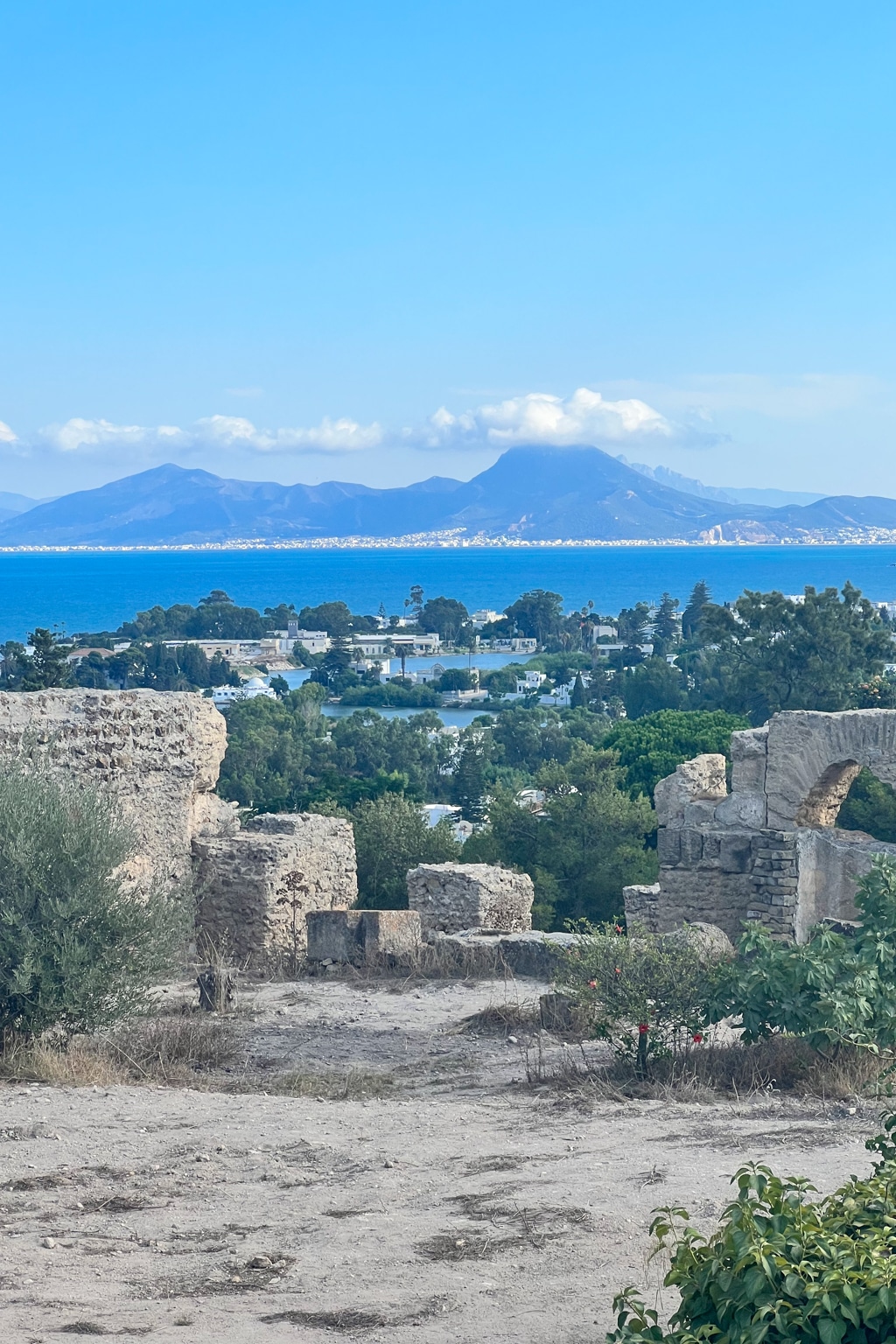
Stepping through the ruins of Carthage, it was fascinating to imagine a path of history that wasn’t followed. Tunis could’ve become the home of a modern-day superpower in a different universe, and there’s much to contemplate as you traverse across the dilapidated columns, walls, and ruins.
If you’d like to explore more ancient ruins beyond Carthage, Tunisia also has a few other similar sites to offer, which were recommended to me:
- The Dougga archeological site was once the capital of Numidia until the Roman annexation, with impressive ancient baths, cisterns, theatres, and temples.
- El Jem is an exceptionally well-preserved third-century amphitheatre that once housed 35,000 people. It’s the third largest colosseum in the Roman Empire, and it’s in considerably better shape than the Roman Amphitheatre in Carthage.
After visiting Carthage, you’ll likely be a little overwhelmed by the heat, and I’d recommend heading to Sidi Bou Said to chill out a little.
6. Visit Sidi Bou Said
Sidi Bou Said is one of Tunisia’s most picturesque seaside towns. The charming suburb is just 30 minutes north of Tunis, and it’s worth dedicating an afternoon or an evening to spend out here.
You can think of Sidi Bou Said as the Santorini of North Africa, with cobbled streets, white walls, blue-domed houses, and stunning ocean views.
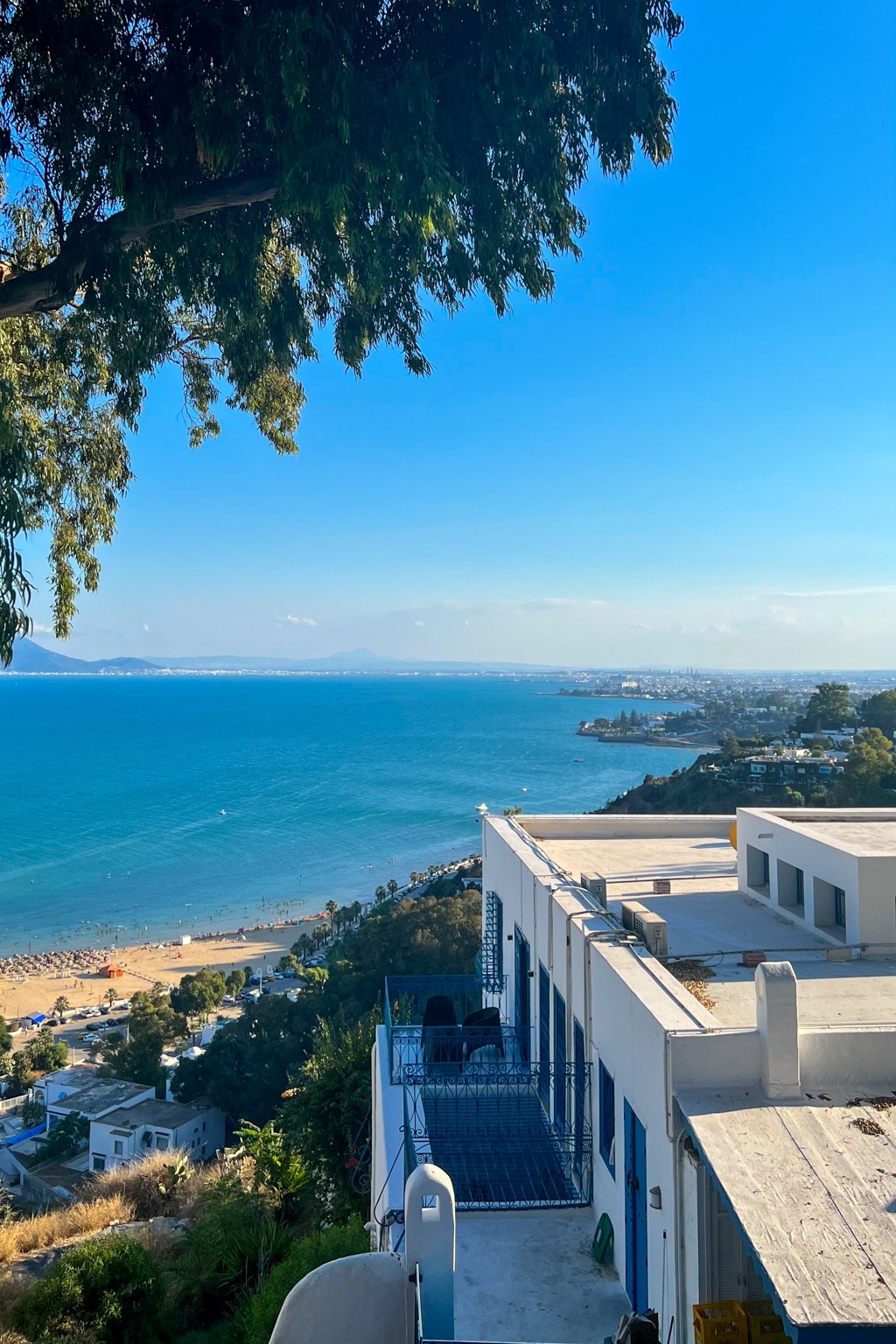
You won’t find a bad view at any of the restaurants and cafés that dot the coastline. From the Mausoleum of Abu Said el Baji, you can catch beautiful views of the Gulf of Tunis, Carthage, La Goulette, and the city of Tunis itself.
Make sure to stop by Café des Delices, which sits on a series of terraces cascading down the hill and offers breathtaking views, delicious coffee, and refreshing fruit juice.
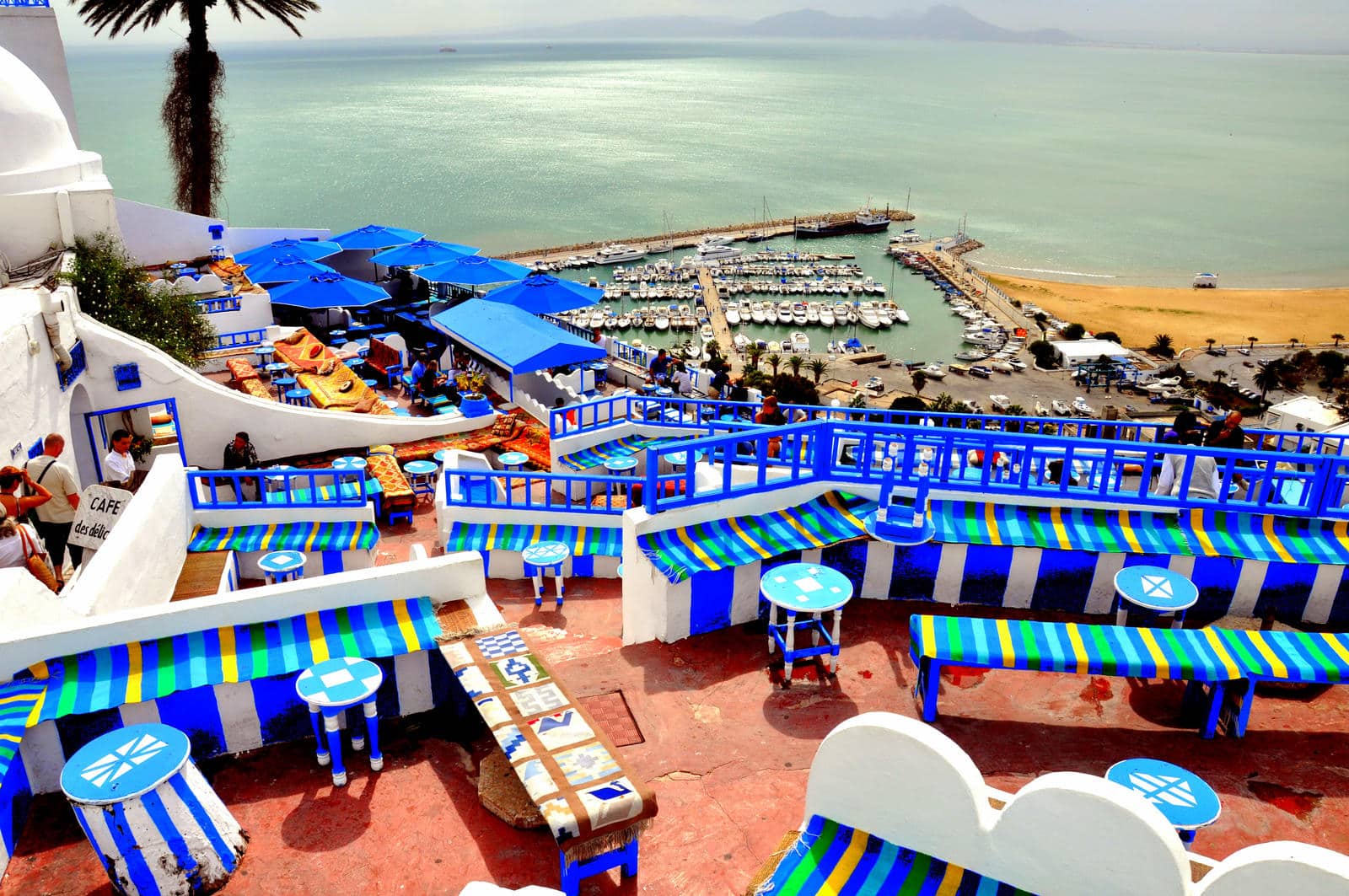
7. Eat Harissa for Days
There’s a ton of delicious food to eat in Tunisia, almost all of which will be accompanied by harissa, a vibrant North African red chilli paste that’s served with bread at the start of your meal.
Staples here in Tunisia include dishes with lamb, fish, and couscous, and French dining is also popular in major cities. But in truth, it almost felt like everything we ate in Tunisia was simply a vehicle for harissa.

The delicious sauce is native to Tunisia, consisting of red chillis as the main ingredient and a mix of garlic, olive oil, citrus and a few spices. We quickly became obsessed with it at every meal.
Harissa is a perfect dip for your bread, and mixes deliciously with your main dish. Whether you’ve ordered beef, lamb, or fish, you can’t go wrong with a generous dollop of harissa on top of everything.
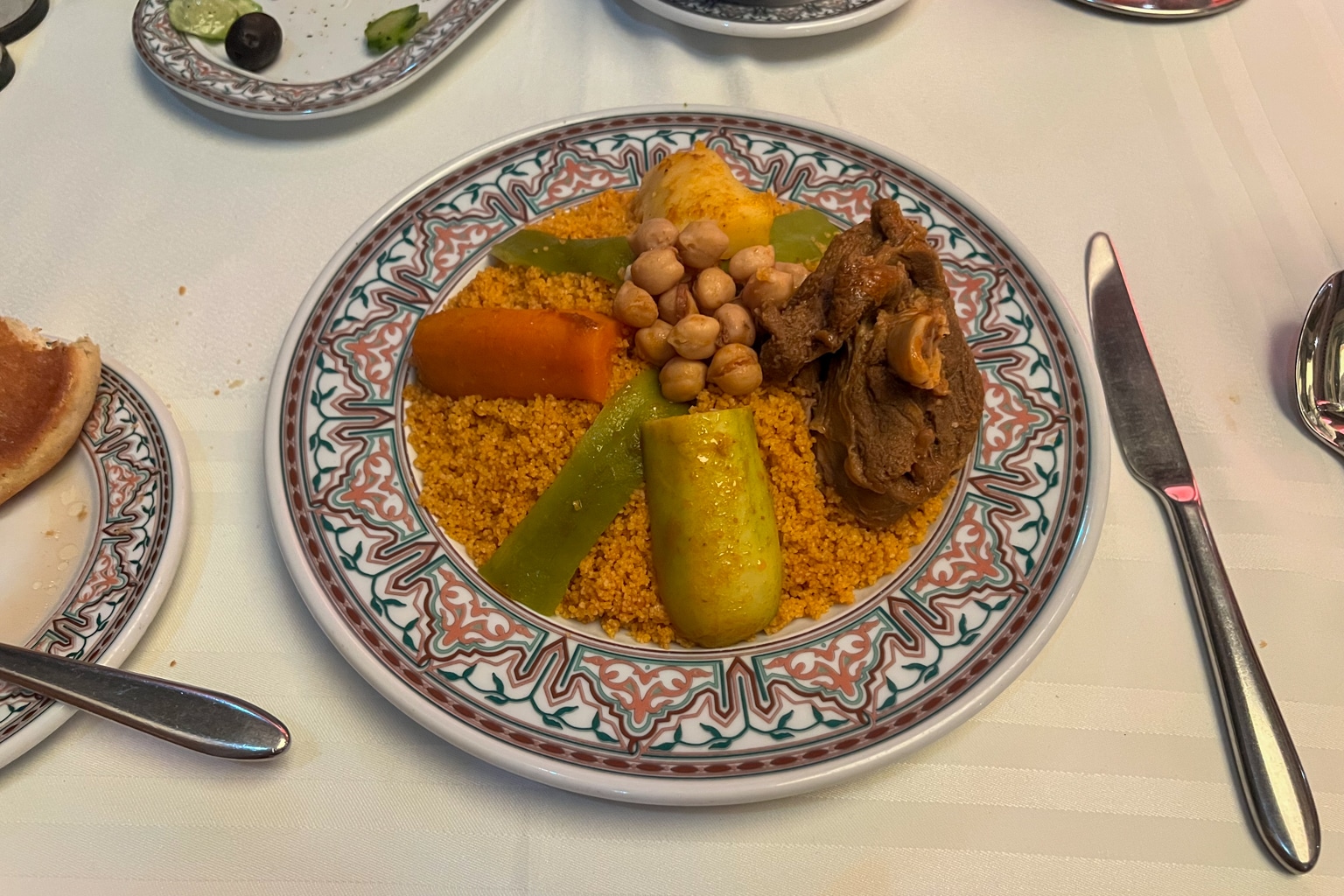
We found that there’s always some variation in how spicy each venue serves its harissa, with the sauce generally getting spicier the further south in the country you go. Still, you never quite know how spicy your next portion of harissa will be.
Generally, you’ll find great food all across Tunisia if you’re into North African cuisine. Below are a few restaurants that I visited and enjoyed:
- Restaurant L’Escargot serves a mix of French, Tunisian, Mediterranean, and European food. The quality of the food is excellent, and prices are reasonable compared to what you’d pay for similar food in Europe.
- Dar Belhadj is located in the heart of the Tunis Medina, serving a traditional Tunisian multi-course menu.
- Dar Zarrouk can be found in Sidi Bou Said and offers Mediterranean, European, and Tunisian dishes. The space has oceanfront views and a more luxurious environment, but the prices here are a bit more expensive.
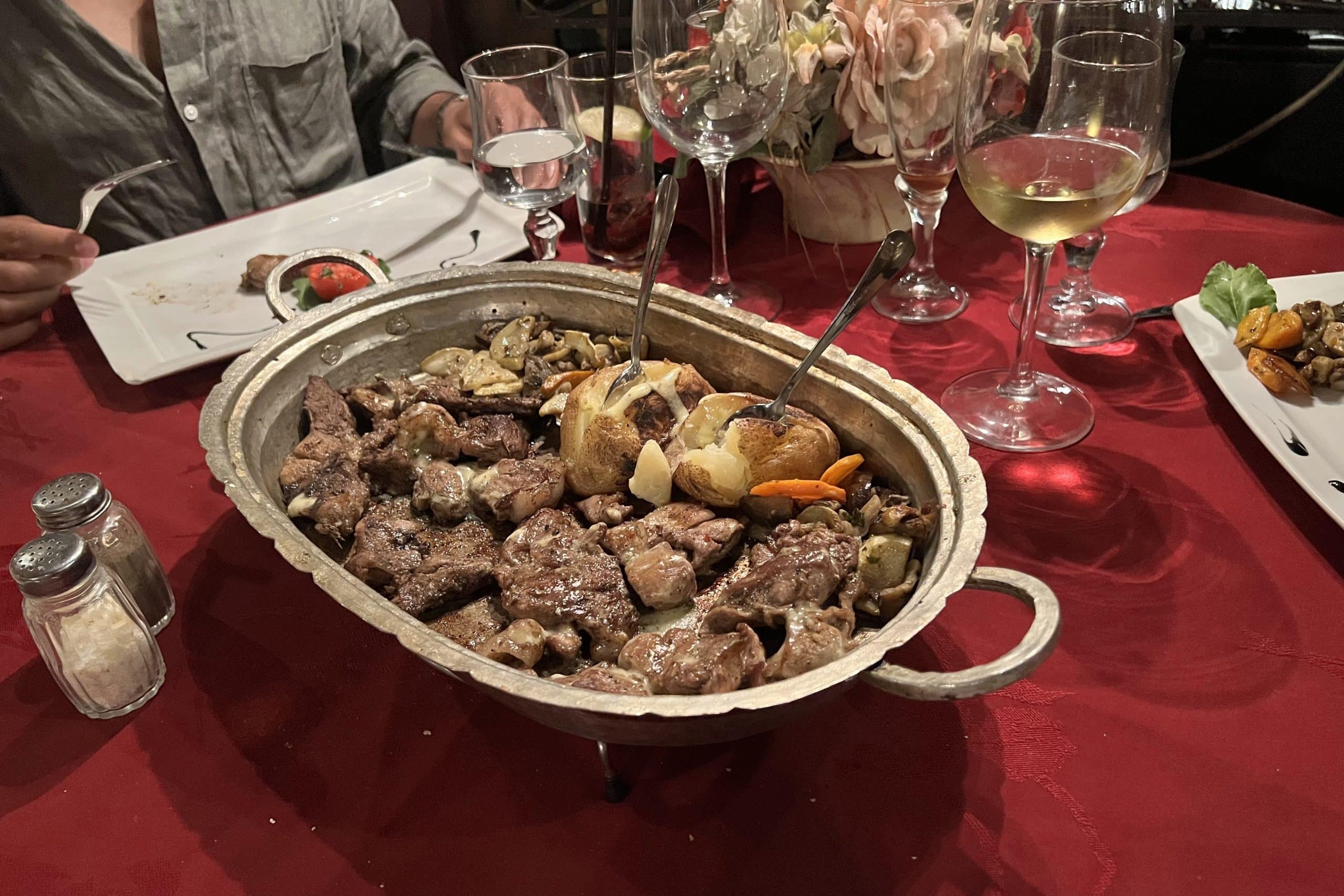
8. Relax at a Seaside Resort
Tunisia has an abundance of coastlines and beaches to unwind for a little bit. Sousse is a popular seaside resort city, where I stayed at the Mövenpick Resort & Marine Spa.
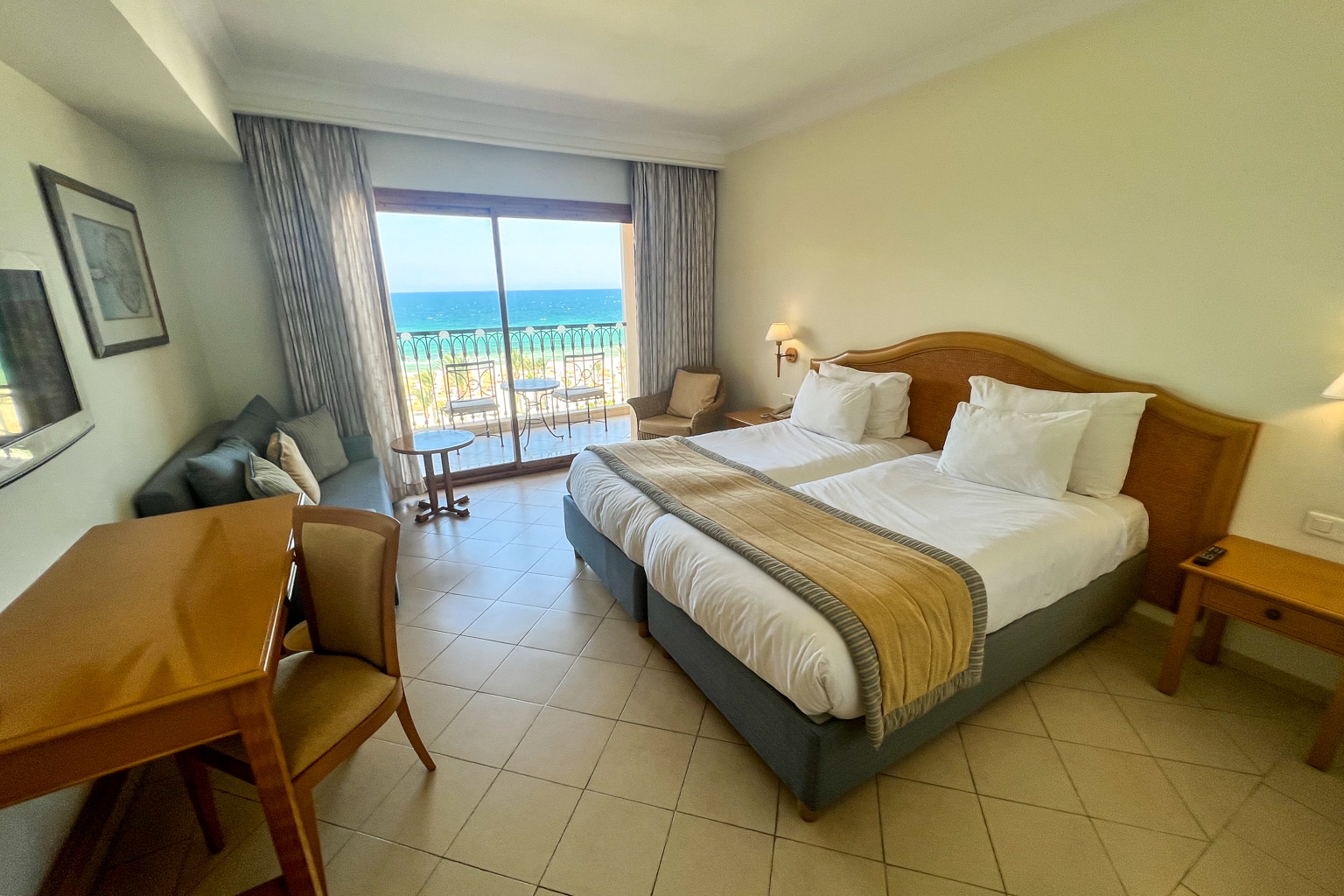
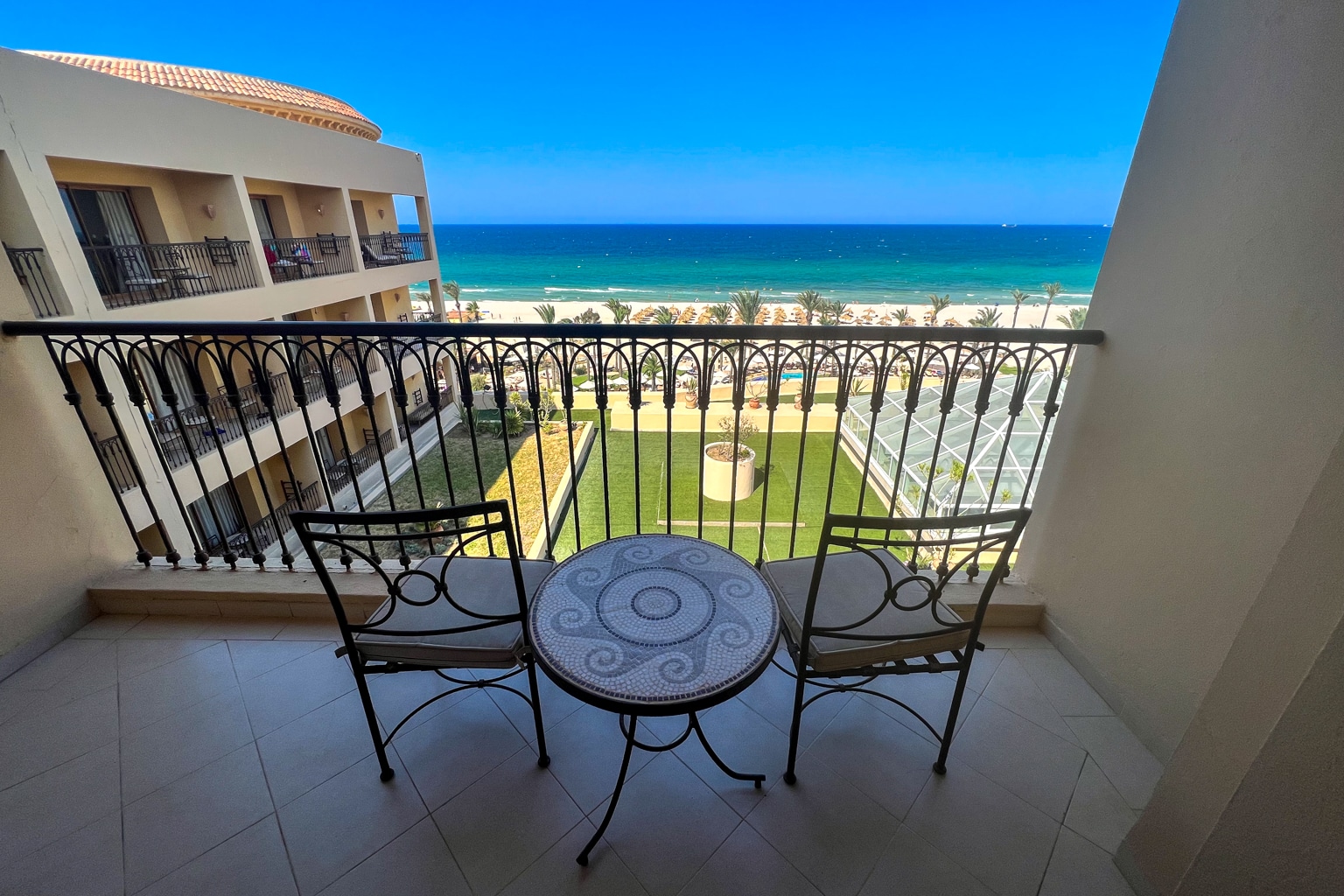
This Mövenpick feels like it was the crown jewel of the city 20 years ago, but now it’s starting to show its age in a noticeable way.
I wouldn’t say I wholeheartedly recommend it, and instead, the Marriott Sousse Pearl Resort down the street looks quite a bit newer and nicer. (We simply stayed at the Mövenpick as our friends happened to be staying there too.)
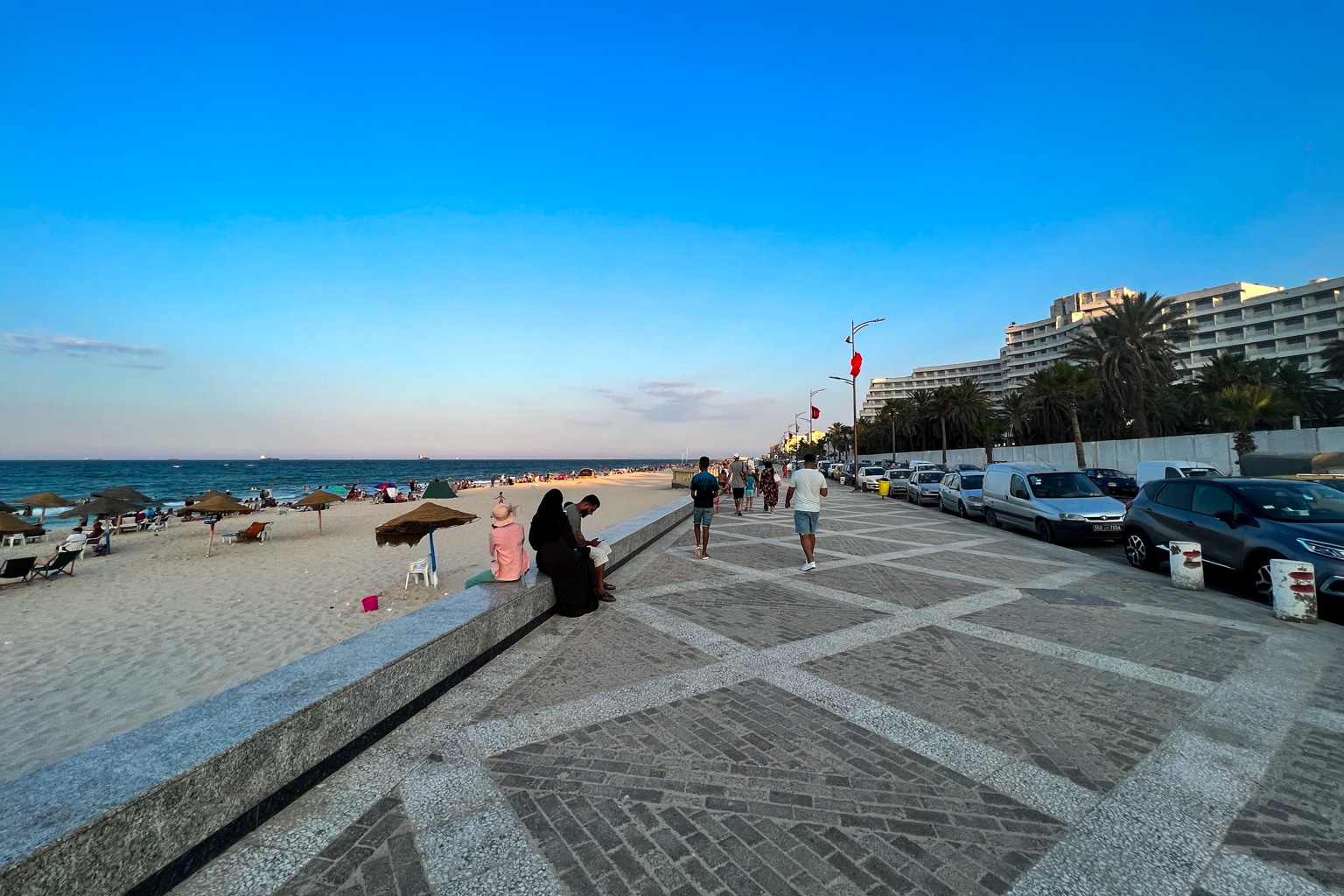
Back in Tunis, while I enjoyed my stay at the Tunis Marriott Hotel, the most luxurious resort option is probably the Four Seasons Tunis in the beachside town of Garmmarth. It’s about an hour or so outside of Tunis, and has beautiful beaches with the Mediterranean Sea right at your doorstep.
If you have an extended stay in Tunisia, I’d definitely take a few days to simply relax on the beach, in addition to checking out the ancient sites and the city.

9. Witness the Pride of a Young State
Tunisia underwent the Arab Spring in 2011 and has since transitioned to a very young democracy. I saw many expressions of national pride during my short visit to the country.
Despite continued struggles with income and the cost of living in the country, I took note of more national flags being proudly flown everywhere than I usually see along my travels.
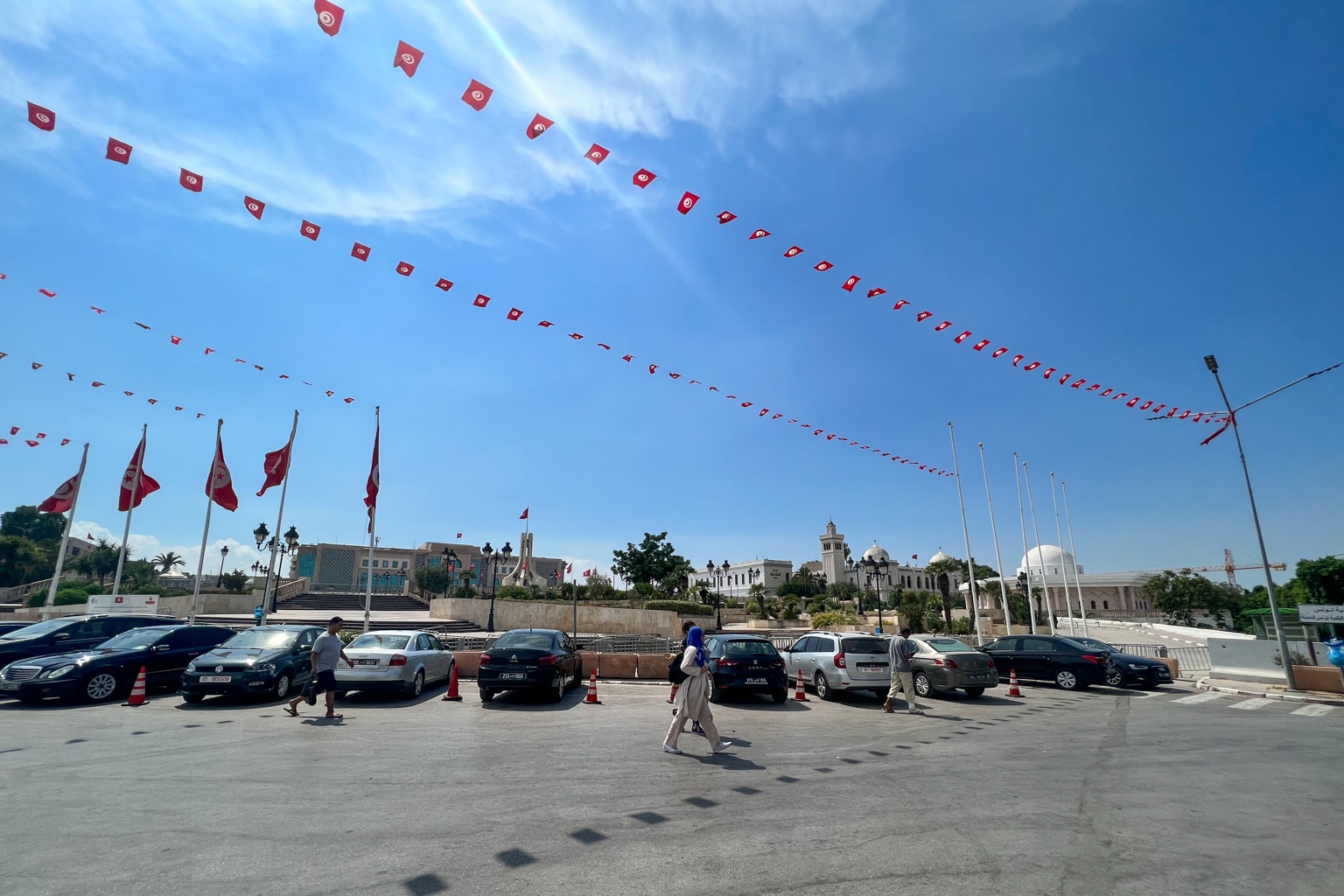
Take a stroll down Avenue Habib Bourguiba, the arterial thoroughfare often described as the “Champs-Élysées of Tunis”, and it’s clear that there’s a youthful and enterprising energy among the Tunisian people, along with a sense of pride in what the country has accomplished so far and the direction they’re moving in.

10. Try Shisha
Shisha is a staple of the Middle East and North Africa. Hot coals are placed atop of flavoured tobacco; as you breathe in, the smoke filters down through water and through a long pipe with a mouthpiece.
No matter where you go in Tunisia, you’re likely to find locals relaxing, sipping tea, and enjoying some shisha together. Cafés that offer shishas are everywhere, and it’s not hard to find one if you’d like to try it for yourself.
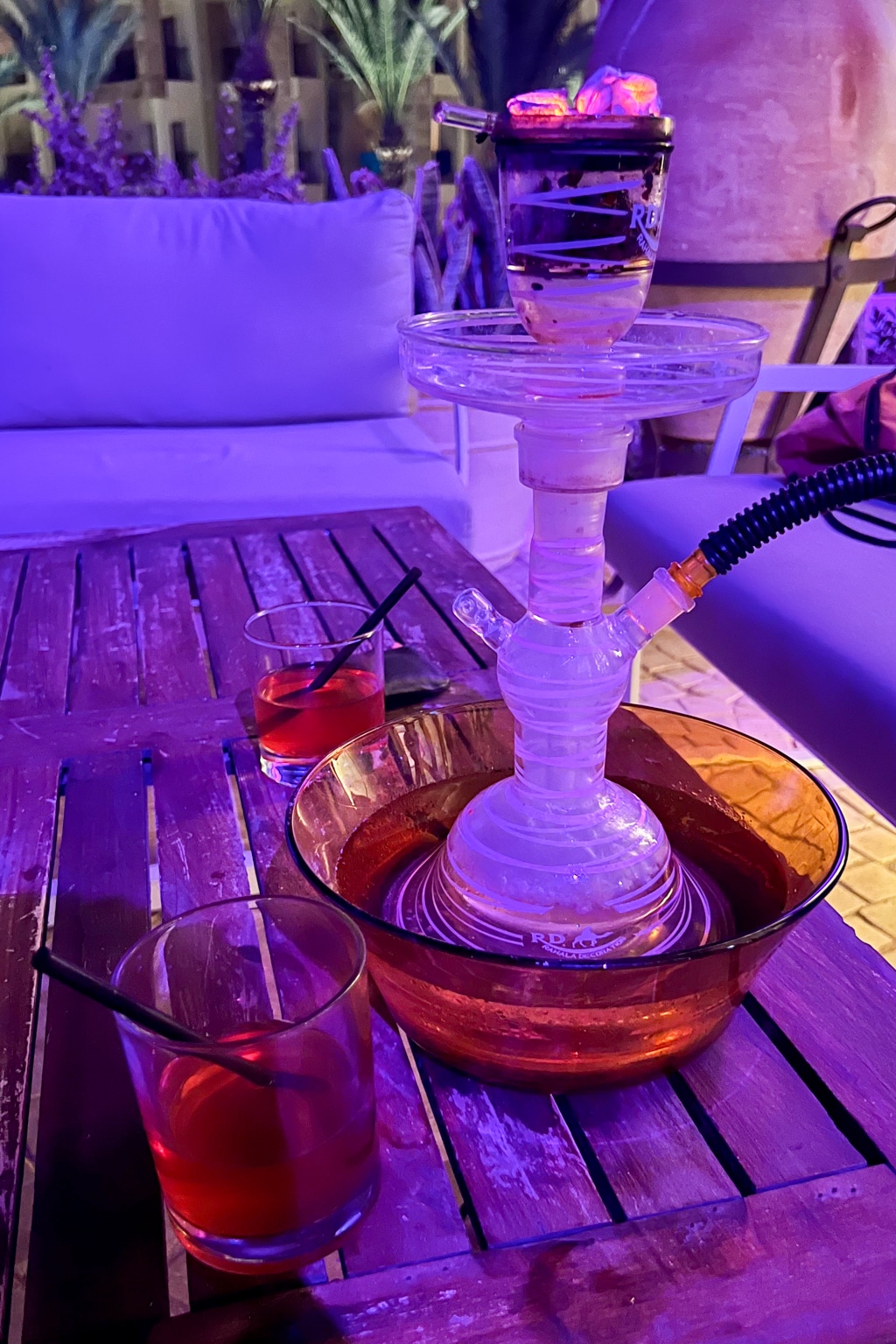
Of course, smoking comes with risks to your health, so keep that in mind if you find yourself in a situation with shisha on offer.
Admittedly, we indulged in shisha on perhaps one too many evenings, but as they say – with a fair bit of historical accuracy in this case – “when in Rome” and what not.
Conclusion
From exploring ancient ruins to mingling with locals in the Medinas, Tunisia is a vibrant country with a little something for everyone.
While it hasn’t necessarily marketed itself for tourism in the same way as its North African neighbours, I still discovered plenty of history, natural beauty, and gastronomy to soak in during my visit.
I’d recommend Tunisia for anyone looking to venture off the beaten path along their travels, and make sure to add some delicious harissa to your breakfast, lunch, and dinner when you’re there.


















